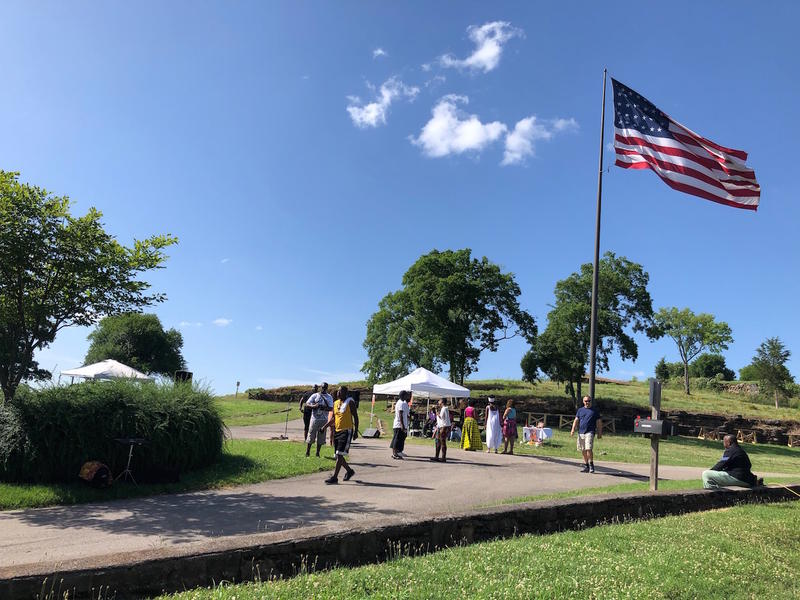
It’s been 20 years since Nashville’s Civil War-era Fort Negley has gotten any meaningful maintenance for its crumbling stone walls. But a recent $1 million Metro allotment will allow some restoration at the former Union stronghold on its hill south of downtown.
The funding is included in the mayor’s latest Capital Spending Plan, which designates nearly $500 million to myriad city projects.
“This is going to be a big deal,” says Krista Castillo, Fort Negley museum coordinator for the past 12 years.
The last significant maintenance happened in 2000. Since then, deterioration has been relentless for what Castillo compares to a living organism.
“It’s built from natural materials that degrade and erode over time. And like any other living thing, it requires constant care and maintenance.”
But until this year, and despite awareness of major structural problems, the perpetual request for funding failed to reach priority status.
A steady decline
At issue with Fort Negley is stonework that was never really meant to last.
Its masonry is “inherently unstable,” says Tim Netsch, the assistant director over facilities for Metro Parks. He tells WPLN News:
There are no foundations or ties back into the earth behind the walls. Historic walls of this type would typically be canted, or sloped back at an angle, but Negley was a defensive fort with vertical walls that would have been more difficult to scale. These design features and others contribute to structural instability.
Research has also shown that low-quality limestone was used during the Civil War and as part of a 1930s Works Progress Administration restoration.
“Preserving it is not a matter of rebuilding some walls that will then be fine for the next 100 years,” Netsch says. “It instead is a long-term program of routine and annual repairs to the stonework.”
More: View Nashville’s Fort Negley research and planning documents.
From her post, Castillo has watched wear and tear accumulate. Gaps are growing in the walls and there have been minor collapses.
“Unfortunately, the fort is in pretty poor shape,” she says.
Now that repairs are forthcoming, one of her priorities is the “sally port” entrance.
“If it would deteriorate to the point where that wall comes down, we’ve lost our only access,” Castillo says. “You just don’t know when we might have a torrential rain or a freezing event that might just be that last nail in the coffin and it might come down.”
Beyond planning
Various planning efforts have been underway for the fort, but Castillo says she’s excited that the latest funding can go into site work. She hopes to have historical masons performing repairs this year — and she intends to create public programming so that Nashvillians can learn about the specialized work.
Beyond the $1 million, any further work would need more money. In fact, the latest Metro plan suggested spending $10.5 million over several years — and the request actually sought to start off with a first injection of $4.5 million.
Mayor John Cooper tells WPLN News the funding is a “momentum-building down payment” for substantial restoration of what he calls a “world gem.” He also notes Metro is balancing numerous pent-up needs.
“I hope this initial investment will build enthusiasm for this site, which helps Nashville, our nation, and the world understand America’s journey of self-emancipation,” Cooper said.
A flurry of developments have brought attention to Fort Negley in recent years, including renewed interest in the role of Black Nashvillians in building the fort and creating post-emancipation neighborhoods in the surrounding area, a dispute over a homeless encampment next to the fort, and a failed redevelopment effort at the neighboring Greer Stadium minor league baseball site.

